
An artist’s creative respite can take any number of forms—an experience on the other side of the camera, say, or the chance to dabble in a new material. Ultimately, that shift in perspective is often the very spark needed to reconsider one’s first calling with fresh eyes.
Regardless of the shape they take, these moments of remove—or what the Soviet literary critic Viktor Shklovsky dubbed “ostranenie”—are crucial to protecting the delicate flame at the core of a creative practice. For Analuisa Corrigan, a Los Angeles–based ceramicist and lighting designer raised by a clan of die-hard stagehands and designers, it’s the painstaking and often invisible trappings of film and TV, brought to life by an ecosystem of artisans, that enliven her work. For the actor Pauline Chalamet, who made her feature debut in Judd Apatow’s The King of Staten Island before starring in the Mindy Kaling–helmed comedy series The Sex Lives of College Girls, escape comes in the form of a more solitary pursuit—writing.
For both artists, the goal is to remain in touch with their material on a fundamental level—whether that means making sure a character feels deeply grounded or ensuring that one’s designs accomplish the singular task of influencing the mood of a space. Chalamet sums it up best: “We are constantly living in the context of something. I want to make sure my work shows that.”
For CULTURED, the pair met at Corrigan’s Los Angeles studio for a little break from routine, courtesy of Tory Burch.
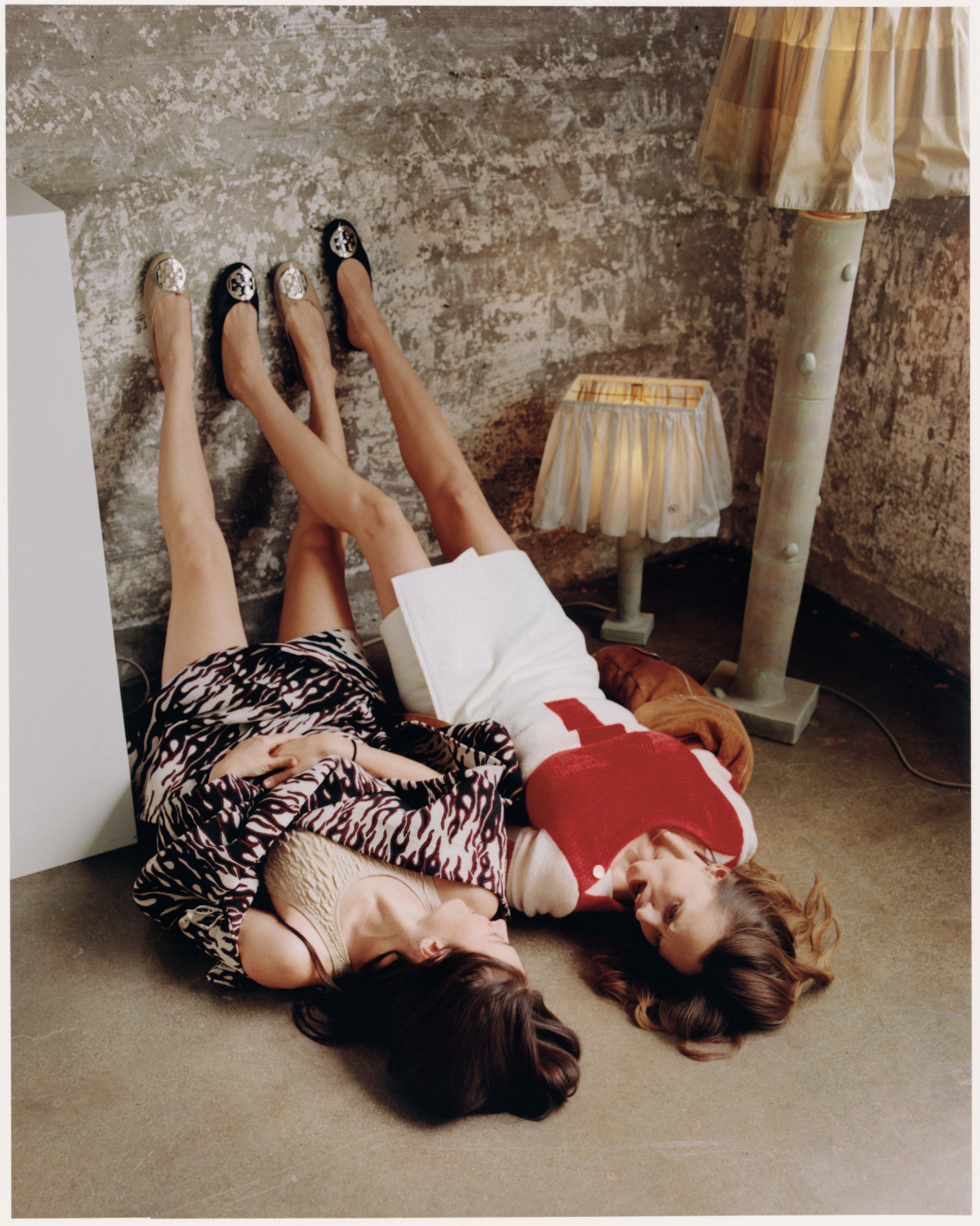
Pauline Chalamet: How did we first meet?
Analuisa Corrigan: My first memory of you was at a friend’s house on a chilly night. You ran out of the house in a bathing suit and jumped in the pool—no one else was willing to get in. I was like, “Oh wow, she really doesn’t give a shit about what everyone else is doing.”
Chalamet: I remember that. As we’ve spent more time together, I’ve really appreciated being around a creative person who’s so generous. You’re generous with your time and your personality, and that’s rare.
Corrigan: I think we’re very similar in that way. How did you realize that you wanted to become an actor?
Chalamet: I had a really roundabout path to solidifying this idea of myself as an actor. I was a ballet dancer for a lot of my childhood, then I went to this performing arts high school in New York called LaGuardia, where I majored in drama. I studied political science and theater at Bard. Then I moved to Paris, where I was working in bars and didn’t really know what I wanted. I finally just auditioned and got accepted to a national acting school. I was like, Okay, this is what I want to do.
Corrigan: It feels similar for me. As a kid, I was always attracted to material practices. I grew up oil painting and just gravitated towards working with my hands, but I didn’t home in on those things until I went to art school. Everyone in my family is a theater stagehand—we’re a big IATSE family. I was surrounded by craftspeople, lighting designers, and costume designers. Having a very intimate relationship with those crafts is really what motivated me to go in this direction.
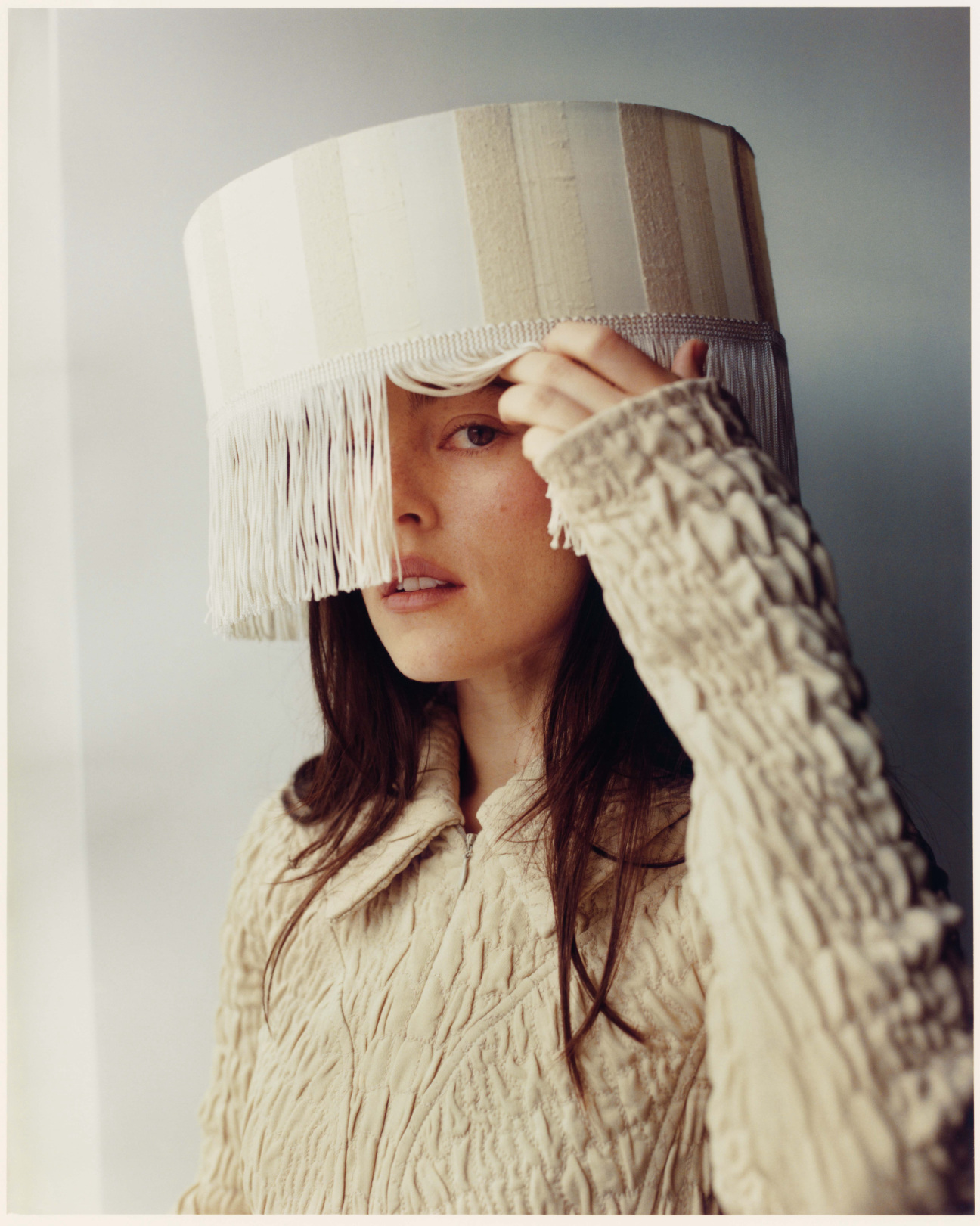
Chalamet: Is there something you’re working on at the moment that’s really exciting you?
Corrigan: For the past eight months, I’ve been developing some new pieces out of aluminum. I’m working with a fabricator and also playing with the material on my own. I’ve also been collaborating with this furniture design company—we’re designing a mirror frame out of aluminum as well. I am really in love with the tactile side of my job, but it has been nice to take a step back from that and focus on fleshing out pure design. What’s the last project you worked on that kept you up at night?
Chalamet: I’m writing two different things right now. I hear from writers that the more you do it, the easier it gets, but it’s never just easy. Hemingway has that famous quote that I’ll butcher. It’s like, “Writing is easy. You just sit at your typewriter and wait for your eyes to bleed.” That resonates with me. It doesn’t ever feel finished—there’s always more that could be done, and I’m always scared of making a wrong choice, or putting something out there that might not be “exactly right.” It takes a lot of vulnerability. Do you have any of that fear in your work?
Corrigan: I try not to put so much pressure on myself because, ultimately, everything has been designed before. Especially in lighting design or objects for the home—both are so deeply embedded in human experience. So, all I’m really doing is taking preexisting objects and adding my own artistic language to them. I guess I remind myself that ultimately, it’s not really that deep.
Chalamet: I would like you to be a little voice in my head saying, “Everything has already been written, Pauline! Just put your spin on it.”

Corrigan: Even so, I’ll still make things all the time where I’ll sketch it and make a maquette [scale model], and I’m loving it. Then, when I make it to scale, I hate it. My trusted individuals will be like, “Yeah, this isn’t working.”
Chalamet: In writing and acting, you often hear the note “Put yourself in the character, infuse your experiences into the work.” Is there an equivalent note for you?
Corrigan: The whole conversation around personal style in the design world can be a little confusing and exhausting to me. I don’t even really know what it means. At the end of the day, I’m just trying to make work that I think will influence a space and that pleases me visually. Recently, I’ve been finding that satisfaction by leaning more into exploring textiles and fabric while keeping the ceramic side a bit more simple. So I do play with those things.
Chalamet: I’m so envious of the fact that you have a craft that involves using your hands. It’s so sexy, and it must require a lot of patience. I’m very envious of that.
Corrigan: It’s also very solitary. I’ve spent some time on film sets just visiting Logan [Lerman, Corrigan’s fiancé], and I’m always so envious of how collaborative it is. I have a studio assistant, but on a set, there’s a really specific collective energy. Everyone is championing each other and working together to actualize a vision.
Chalamet: It’s true—everyone is so important. Like, how many cinematographers or production designers can you name? Fewer than you can directors or actors—yet they are so profoundly important. Take Polly Platt—she did the production design for many of Peter Bogdanovich’s movies. She’s said to have discovered Wes Anderson. Not enough people celebrate those types of talent.

Corrigan: Some movies I watch only for the production design. Would you ever see yourself working behind the camera?
Chalamet: I’ve directed a few short films, but I really think directing is a calling. It’s like, you want to be captain of the ship, but there’s got to be this pull, this reason why you want to be captain of that ship. I haven’t had that calling yet. I still love working with directors, and I want to work with many directors. Outside of ceramics, is there a completely different art form that calls to you?
Corrigan: I have always been really excited by set design. My whole life, I was conditioned by my family to be a stagehand, or a stage manager, and work in theater. It would be cool one day to build a world in that way, but I’m not dying to do it. Some days, though, I’m like, How long can I keep this up and make people want lamps?
Chalamet: I want to ask you—how do you keep your work feeling fresh?
Corrigan: Inspiration comes and goes. If I have a big creative block, I try to give my brain a break from my own medium and try to find interest in other ones. I watch old movies or poke around different archives. I’m big into trawling the Met and New York Public Library digital archives—that always sparks something for me. What about you?
Chalamet: When I’m working, I try to just keep zooming out. I tell myself that the script might say I hate or love something, but nothing is absolute. This is a real person—nothing about them is black and white. It helps to reread scripts. I always want context—if only just to throw it away. We are constantly living in the context of something, and I want to make sure my work shows that.
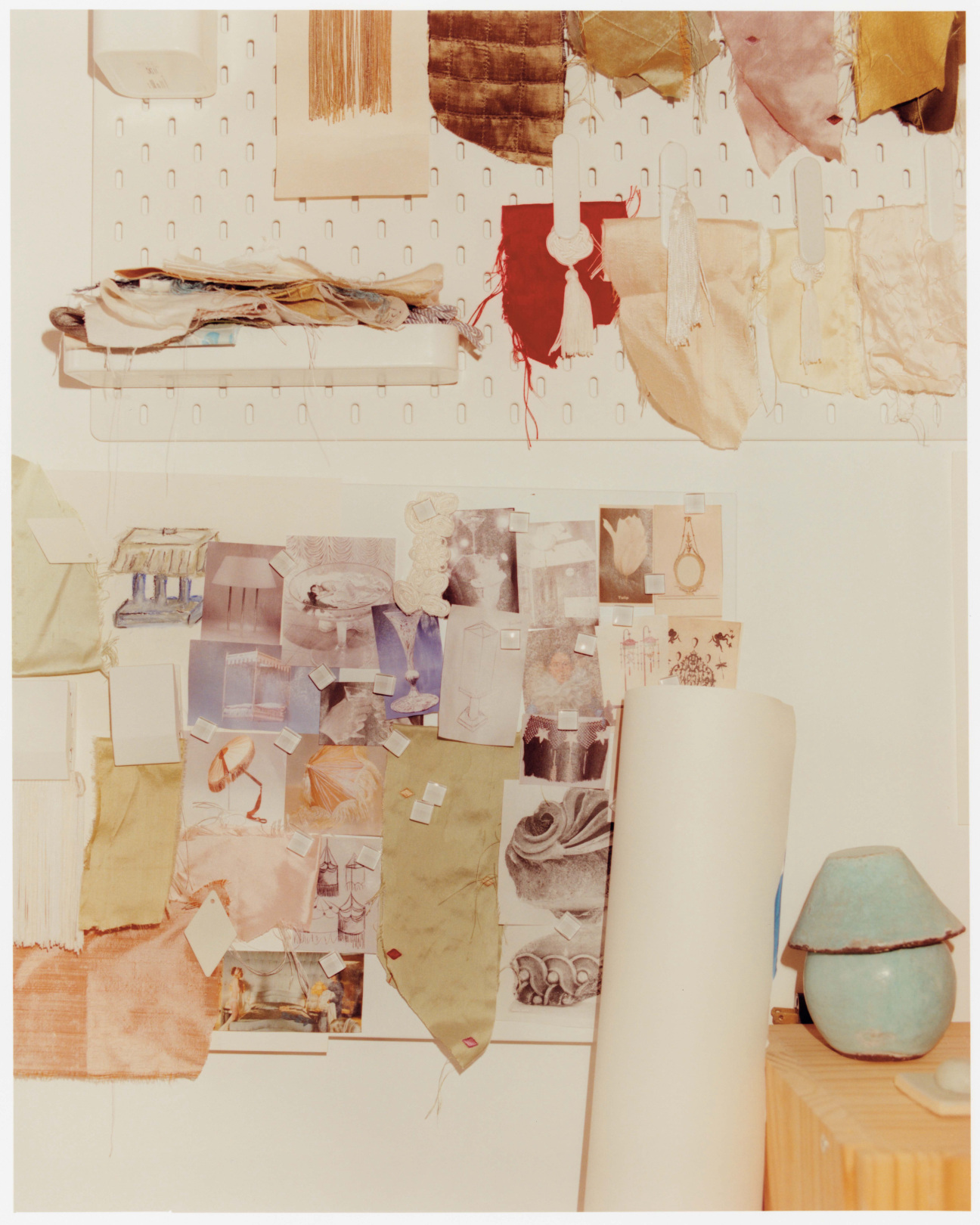
Hair by Ashlee Rose at Forward Artists
Makeup by Yasuko Shapiro for the Wall Group and Tom Ford Beauty
Photography Assistance by Michael Camacho

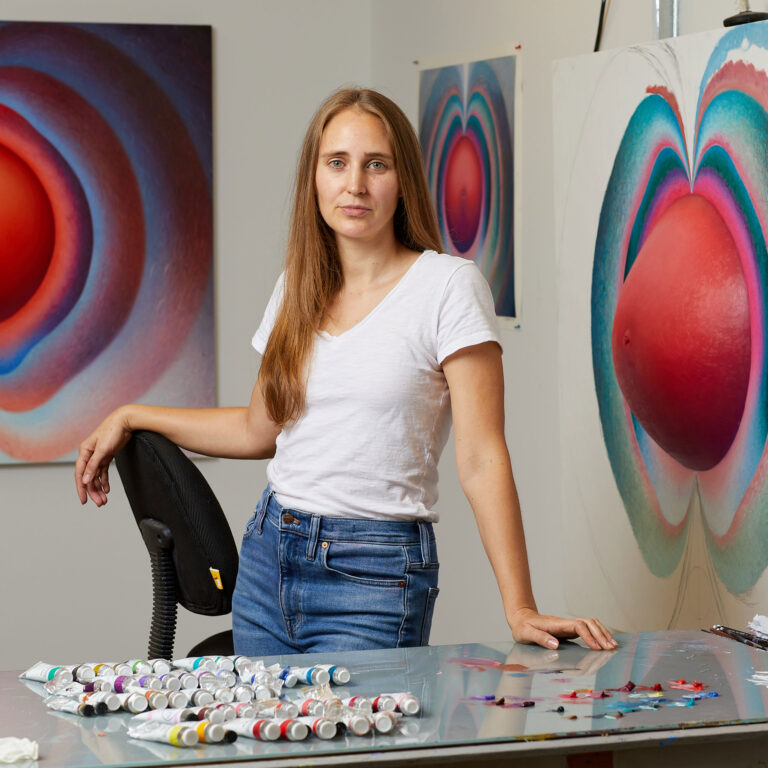
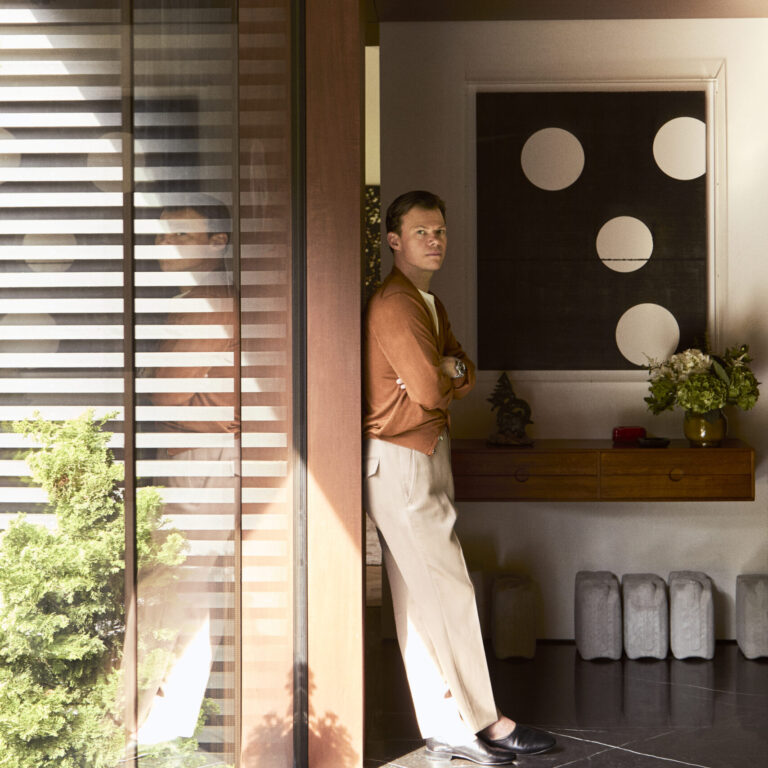

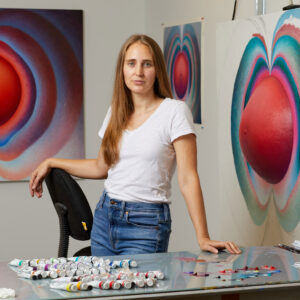
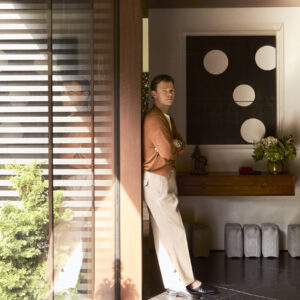


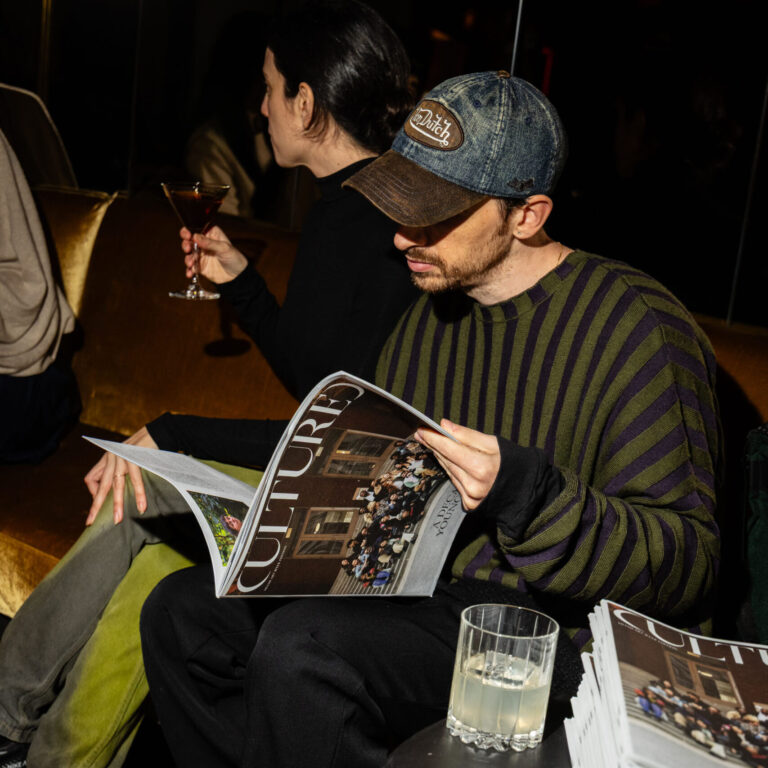

 in your life?
in your life?

